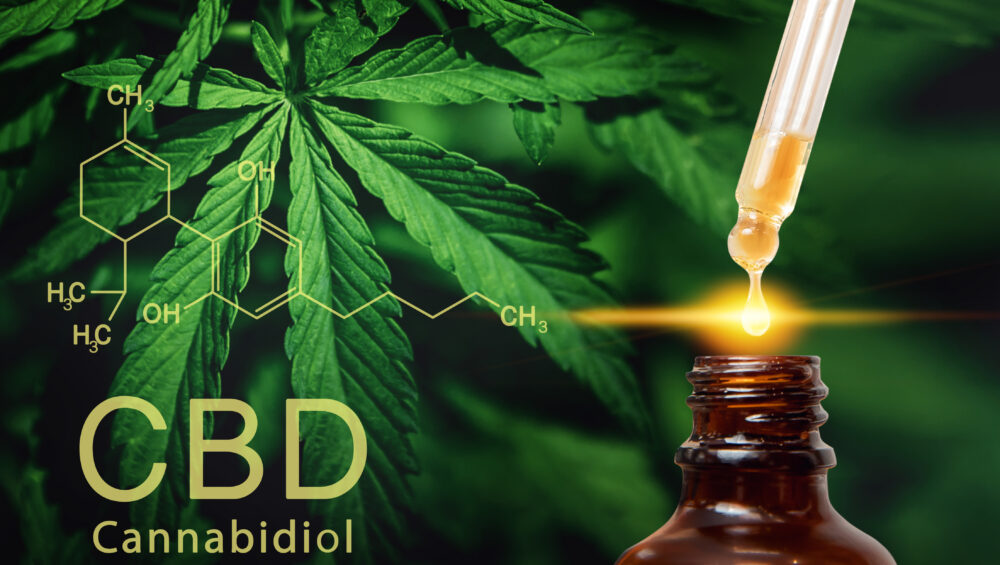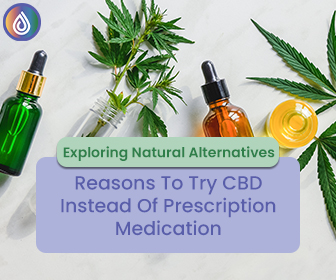3 Ways CBD Is Extracted
Cannabidiol (CBD) is a cannabinoid found in all cannabis plants and is the prime ingredient used for CBD products. Though this is common knowledge, not many people know how CBD is extracted.
Understanding CBD extraction is vital as it plays a major role in the quality of CBD. In other words, the right extraction process gives you nearly 100% pure, organic cannabidiol. Whereas the wrong extraction process can leave your CBD contaminated with heavy metals, unhealthy solvents, and more.
Throughout this article, we’re going to observe three of the most common CBD extraction methods.
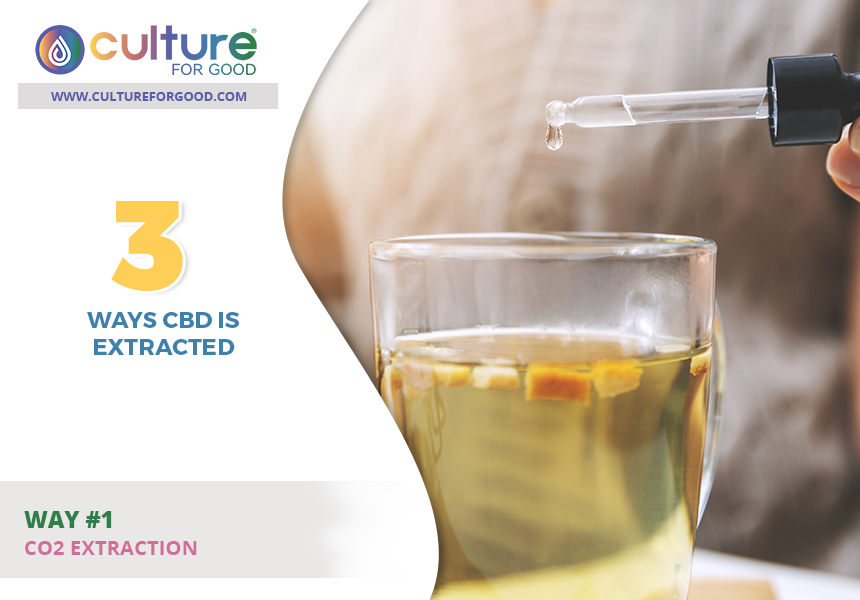
1CO2 Extraction
One of the most popular CBD extraction processes is known as CO2 extraction. When pressurized into a state known as dry ice, it’s able to run through the cannabis plant and extract and chemicals or flavors.¹
This an ideal extraction method for businesses for a number of reasons:
- CO2 extraction leaves little to no contaminants. This means companies don’t have to run the CBD through a separate evaporation process, which takes a long period of time.
- The temperatures and pressure of CO2 are highly adjustable. This is ideal as different cannabinoids require different temperatures/pressures. For example, CBD is extracted at a lower temperature/pressure in comparison to THC.
The only true downside to CO2 extraction is it’s expensive. Companies that use this extraction method may need to raise the prices of their CBD simply to meet extraction costs.
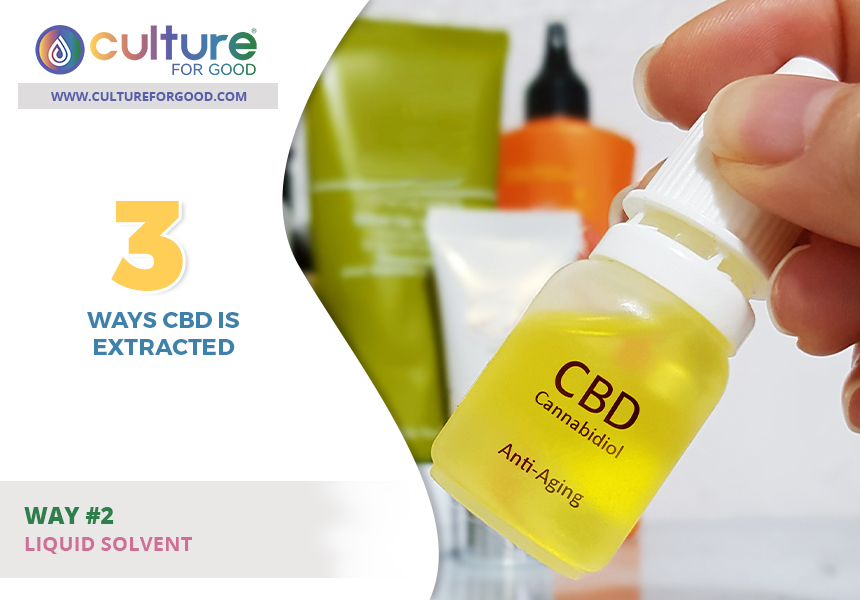
2Liquid Solvent
Liquid solvents are usually a combination of the following:
- Butane
- Ethanol
- Hexane
- Isopropyl alcohol
When this solvent is ran through the cannabis plant material (flower and trim), cannabinoids will follow through and into the solvent. Once the liquid evaporates, what is left are these cannabinoids in an oil form.²
Many companies choose to extract through a liquid solvent for the following reasons:
- It’s the most simple extraction method, requiring much less money in comparison to CO2 extraction.
- Since it’s cheaper, companies are able to sell their CBD for a reduced price, potentially bringing in more customers.
However, there is a major downside to extracting CBD with liquid solvents. The final product tends to leave various impurities within the CBD oil. Of course, no reputable CBD company would sell you a product with this contamination.
In order to combat impurities, many extraction facilities will run the CBD oil through an evaporation process. This gets rid of the contamination and leaves you with nearly 100% pure CBD.
Liquid solvent is the most popular extraction method within the CBD industry because, when done properly, it’s just as effective as CO2 extraction and costs much less.

3Oil Extraction
Oil extraction of cannabinoids is a practice that goes as far back as 2000 years. Many smaller CBD brands who work out of their own homes will most likely use this extraction method as it’s simple.³
Proper oil extraction goes as follows:
- The raw cannabis plant is heated to a specific temperature in order to activate the cannabinoids – also known as decarboxylated.
- The heated plant material is then added to olive oil and heated to 100℃ (212℉) for 1 to 2 hours. It’s during this stage that the cannabinoid are extracted.
- The final oil is a concentrated form of CBD.
Unfortunately, this extraction method leaves olive oil within the CBD. Though this isn’t dangerous for the body, it does require a consumer to use more in order to feel CBD’s effects.
Furthermore, this kind of extraction method requires the final product to always be stored in a cold and dark place. If not, the CBD will spoil quicker in comparison to CBD extracted through other methods.
It’s unlikely you’ll run across a commercial CBD company using the olive oil extraction method. Rather, this method is more a way for individuals with an interest in extracting their own CBD.
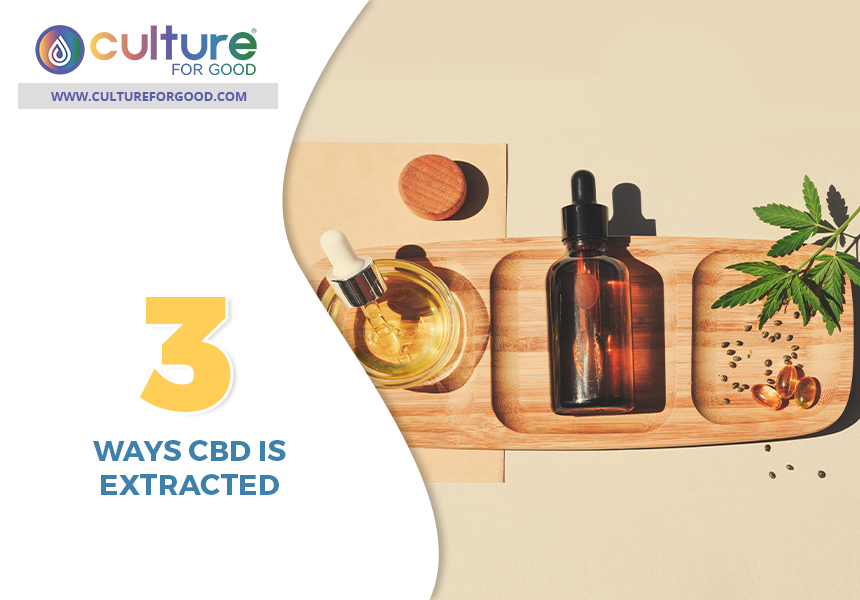
Final Thoughts
The reason we share this information with you is we believe it’s the consumer’s right to know how their CBD is being made. We’ve found that when people learn about CBD extraction, they usually develop their own extraction preference.
Furthermore, it’s important to note, new technologies are emerging which would allow for CBD to be extracted in other (and potentially safer) ways.
If you’re interested in purchasing a CBD product, we invite you to Culture for Good’s products page for more information.
Reference Sources
¹ PSI: Cannabis/Hemp Extraction Equipment
³ PubMed: Extraction Method and Analysis of Cannabinoids in Cannabis Olive Oil Preparations.
